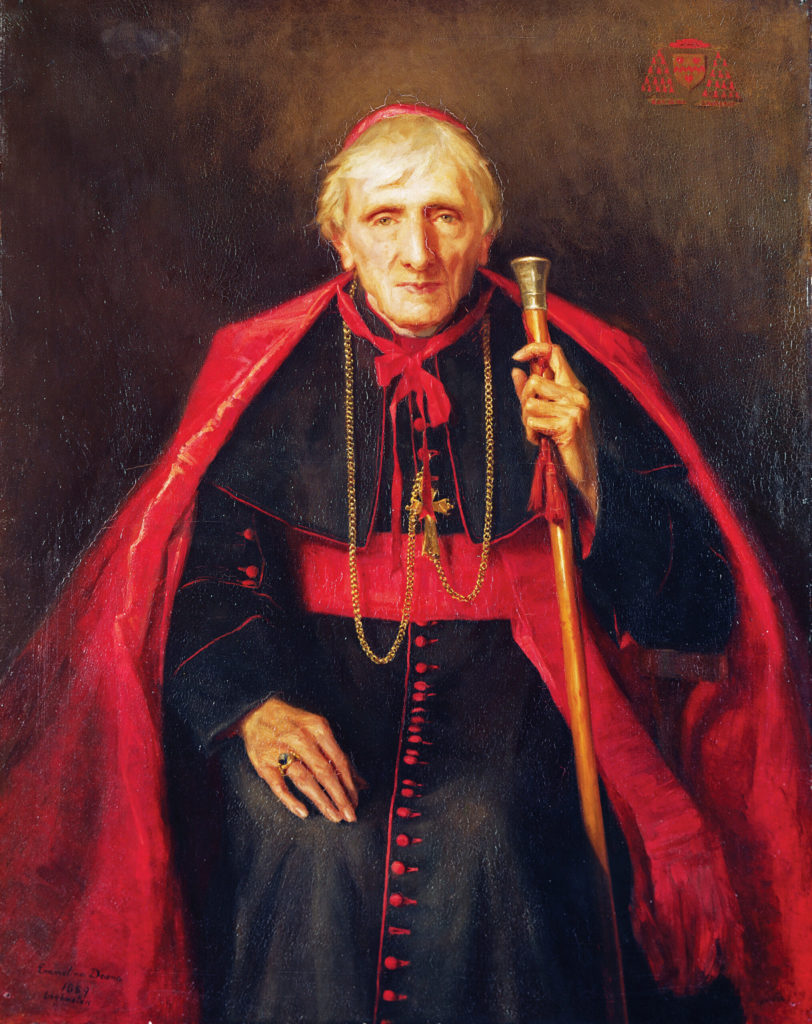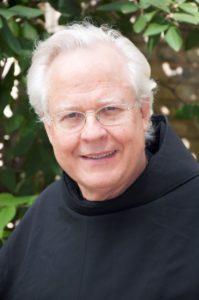
Portrait of John Henry Newman (1801-1890) 1889 (oil on canvas) by Deane, Emmeline (d.1944); National Portrait Gallery, London, UK
Newman as a Critic of Modernity #2
A Catholic sacrifices his (her) opinion to the Word of God, declared through the Church, but from the nature of the case, there is nothing to hinder him from having his own opinion and expressing it, whenever, and so far as, the Church, the oracle of Revelation, does not speak.[1]
Remembering Forward during the Easter Season recalls that “death and life have contended and the Prince of life who died, reigns immortal.”[2] In a similar combat, identified as modernity, St. John Henry Newman is a prophet of lamentation and jubilation as Jeremiah and Isaiah. The language of prophecy guides the life of a Christian.[3] The prophets, the Greek Fathers as Origen, and the Latin Fathers as Augustine, are a backdrop for Newman who never speaks about himself as a prophet while engaging modernity and unearthing the operation of Liberalism in the secular sphere with a prophetic critique. After his conversion “his main interest is the diagnosis and refutation of rationalism in religion which he believes has attenuated and disfigured the genuine Christianity of the early Church.”[4]
Vatican I, a quarter of a century after his conversion, for various and complex reasons, missed employing Newman as an intellectual resource. Ironically, Newman diagnosed what is deeply felt and the growing operative approach to living as a Christian today:
(a.) the rejection of doctrines and correlative rejection of the felt need to have doctrines regulate the Christian community; (b.) the valorization of private judgment over tradition; (c.) a marked attenuation of the sense of God as the totally Other and a downgrading to a moral lawgiver who is himself subject to morality that he supposedly institutes; (d.) a distaste for the dramatic view of the human being who can attain to the sublime height of sainthood or the abysmal low of incorrigible sinner (C. O’Regan).
Why did the leaders at Vatican I miss such a keen eye? The preparation for the Council, its tonality, refusal to negotiate with modernity, and insistence on scholasticism in its replies, initiated fallout afterward that did not bode well for the Church between 1870 and 1930. Newman had diagnosed modern ideology and its development. Today, ideologies try to rinse and to bleach faith while allowing reason to be the sole referee. Authority is discarded.
After Vatican I, a crisis of modernism arose, advanced by ressourcement research, Nouvelle Théologie, transcendental thomists engaging Kant, and theologians who would become leaders at Vatican II. In supreme irony, Vatican II became Newman’s Council. The narration of his insights properly is as intellectual, prophetic, and apocalyptic as his original observations. His gifts serve ongoing reform and renewal of the Church in the 21st century.
From his Oxford days, Newman analyzes the verbal onslaught against rational Christianity and that they have lost all sense that the visible is not all that is the case. Overboard went the invisible as latent and effective within the visible.[5] The new social and ideological cultural set was making it impossible to understand what a sacrament is supposed to be. Newman accepted the more traditional view that a sacrament is the presence of the invisible power of God in time, matter, and space. Charles Taylor refers to this burying of historical Christianity and rise of counterfeit Christianity as the new social imaginary. [6]
The “surprise of surprises” was Newman’s going over to the Catholic Church as the one Church of Christ acting in the world. The air he breathed was filled with a rationalism, naturalism, and skepticism which sidelines the questions. Is there a God? Does Christ save us? Should we trust Scripture and its interpretation? The ideology protocols and alternative science models crash head on with the Church. A pastiche of Karl Marx is that the kingdom of God is on earth. Marx could tolerate tyranny for a while in order to get to social justice for all. Marxism would become a calamity, tolerating tyranny that has never stopped.[7]
Newman was named to the cardinalate a decade after Vatican I, and his acceptance speech is synoptic. “Liberalism in religion is the doctrine that there is no positive truth in religion, but that one creed is as good as another, and this is the teaching which is gaining substance and force daily.”[8] His aim was to denounce modern rationalist forms of Christianity which capitulated to secular reason. His style of argument was not from scholasticism about which he knew little. Both the default intellectual position of secular modernity and the new social imaginary was fully established in the 19th century. The refusal of the Catholic Church to negotiate kept it in a defensive posture. Newman’s defense of the Church drew from biblical and patristic sources, and made use of Butler’s[9] probability. Vatican II employed philosophy’s principles and methods while engaging theology. The Church has no philosophy of her own, nor does she give preference to one.[10]
Newman saw through the counterfeit of secular Christianity which disguises itself as genuine and immunizes itself against attack as Lockean inspired: “Religion is a private luxury which a man may have if he will; but which of course he must pay for, and which he must not obtrude upon others, or indulge in to their annoyance (which) is a great apostasia.”[11]
Remembering Forward # 8 will continue this study of Liberalism, as Newman identified the prevailing spirit in England of his day, now so widespread throughout the Western world.
Fr. Edward J. Ondrako, OFM Conv., Univ. of Notre Dame, Easter Reflection 2, eondrako@alumni.nd.edu
__________________________________________
[1] J. H. Newman, Letter to Norfolk (London: uniform edition, 1874), 345.
[2] Sequence for Easter; Victimae paschali laudes.
[3] “Proof from prophecy is partially about predicting the future and aligns with miracles.” J.C. Cavadini.
[4] C. O’Regan’s teaching on Newman at Notre Dame pivots on this conviction. I embrace it willingly.
[5] Pouring of water and words of baptism, bread and wine consecrated by a priest, words of absolution for sin, anointing with oil blessed by the bishop, etc.
[6] C. Taylor, A Secular Age (Cambridge, MA: Harvard University Press, 2007).
[7] E.g., Ukraine and the forced starvation by Stalin in 1931-1932 and the atrocities by Putin in 2022.
[8] J. H. Newman, Biglietto Speech, 12 May 1879. Given upon his receipt of the cardinalate.
[9] Bsp. J. Butler, The Analogy of Religion (1736).
[10] Pope John Paul II, Fides et Ratio, 1998, no. 49.
[11] Biglietto Speech. Apostasia is Latin from Greek apostasis, meaning defection.
Fr. Edward J. Ondrako, OFM Conventual
Research Fellow Pontifical Faculty of St. Bonaventure, Rome
Visiting Scholar, McGrath Institute for Church Life
University of Notre Dame
Easter Monday ~ April 18, 2022
